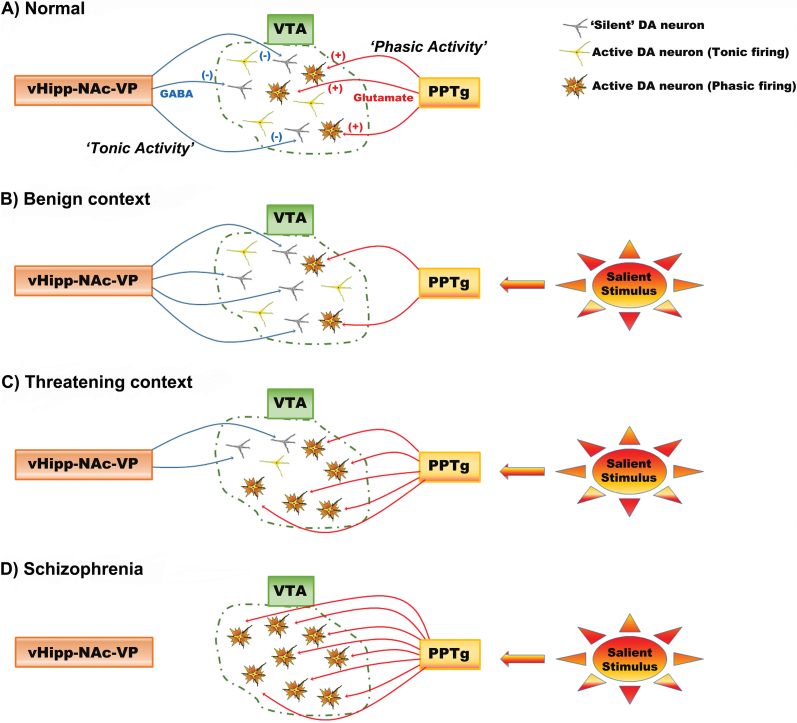Fig. 2.
The hippocampus regulates DA neuron responsivity based on context. (A) The ventral hippocampus (vHipp) activates the nucleus accumbens (NAc) to inhibit the ventral pallidum (VP), driving VTA DA neuron tonic population activity. Pedunculopontine tegmentum (PPTg) input acts on tonically active DA neurons to generate phasic bursts of firing: this constitute the behaviorally salient rapid DA response. (B) If an organism is in a benign context where rapid reactions are not necessary, the number of DA neurons firing is kept low and the PPTg will only activate phasic bursting in a small population of neurons. As a result, a salient stimulus will trigger a calm orienting response. (C) In contrast, if the organism is in a threatening environment, the vHipp-NAc-VP pathway causes a large population of DA neurons to be active, increasing vigilance to the environment. Now the same salient stimulus will cause a larger phasic response, driving the organism to rapidly orient to the stimulus to prepare an appropriate response. (D) In schizophrenia, DA neuron population activity is in a constant high-activity state. Hence, most of the stimuli the organism encounters will lead to maximal dopamine output, resulting in the attribution of strong behavioral importance to stimuli, even to stimuli that should be safely ignored.

